I. Trouble For The Hell Of It
 One night, I took off my Michael Myers mask and watched Halloween III: Season of the Witch (1982). It was the first time I had done that, though it wasn’t the first time I had watched the film.
One night, I took off my Michael Myers mask and watched Halloween III: Season of the Witch (1982). It was the first time I had done that, though it wasn’t the first time I had watched the film.
Growing up watching and discussing horror movies, Halloween III was a title that inspired nearly the same barks from somebody you either watched it with or tried to speak about it to: “IT HAS NOTHING TO DO WITH MICHAEL MYERS: SUCKS!” screams somebody into your ear. The most common cry of disapproval being: “IT SHOULDN’T BE CALLED HALLOWEEN!”
If when the smoke clears from such exclamations that person or those people is/are still anywhere near you, then you might have an opportunity to have that less-had conversation: the one about what Halloween III actually does offer—an interesting and at times even humorous conglomeration of horror and science fiction just on the other side of what those harsh ejaculations about Michael Myers and the film’s title would have us believe.
Yes, Michael Myers is one hell of a frighteningly interesting character (wait, is he?) but, is he truly worth the rejection of something refreshingly new by way of the third installment in this infamous series? —“Hell yes!” was/is the resounding answer to that question for many horror fans. And that’s perfectly fine.
I don’t claim that it’s not tempting to wonder why the filmmakers attached Halloween III to the Halloween series (which had produced an incomparably successful 1-2 punch in the seedy world of horror cinema) or to disregard the fact that one could easily view it as a straight up punch in the mouth to fans of those earlier films; but, I do claim that those thoughts are boring. Like, “totally“ boring, if you’ll permit the P. J. Soles line (you will). There’s more than just another Halloween movie here. Call it whatever you want.
Be that as it may, the fans of Halloween (1978) and Halloween II (1980) respectively (disrespectively too, of course) wanted what they wanted, i.e. MYERS; got disappointment instead. What a guessing game for the filmmakers, trying to please so many people you’ve never met while ensuring the hands of those in charge don’t hesitate signing the checks that make your vision reality—what must be done to ensure that!—how truly horrific!
 “Fuck ‘em,” is how John Carpenter’s and director, Tommy Lee Wallace’s, treatment for Halloween III: Season of the Witch, came out. The script was originally written by Nigel Kneale, but eventually rewritten by Carpenter (uncredited), credited solely to Wallace.
“Fuck ‘em,” is how John Carpenter’s and director, Tommy Lee Wallace’s, treatment for Halloween III: Season of the Witch, came out. The script was originally written by Nigel Kneale, but eventually rewritten by Carpenter (uncredited), credited solely to Wallace.
There you have it, Halloween III—a new tale spawned from an idea that Halloween, quite simply, could be more than the boogeyman; that under this umbrella term, there was potential for something of a horror series, with each chapter, in its own unique way, creatively exploring the wicked and nefarious, quenching the same viewer-inspired thirst for evil just like the original and sequel did, yet in entirely different ways and completely irrespective of its link with the aforementioned creative and financial successes bearing the same imprint.
—Yes, what an idiotic idea indeed. The public proved it! TOTAL FLOP! Though, surely from the mind of John Carpenter—director of The Fog (1980) and Escape from New York (1981) before his involvement with Halloween III, and who had written, along with Debra Hill, Halloween II—an idea such as this must have presented itself as quite appealing to producers and behind-the-scenes heavyweights.
Whatever it took to keep Halloween alive, appeared what horror fans wanted most. How they wanted it, however, became quite clear once Halloween III appeared.
II. (Most Of) The Gangs All Here
Links abound connecting this new chapter with prior Halloween entries. But, mostly, they are to be found behind screen, and are more closely connected to Carpenter than with Halloween.
 As they did with Halloween II, Universal Films distributed Halloween III. Moustapha Akkad, producer of the first two films, produced Halloween III, and, the incredible cinematographer, Dean Cundey, director of photography on Halloween II and the Carpenter-directed remake of, The Thing (1982), also provides his talent here on Halloween III.
As they did with Halloween II, Universal Films distributed Halloween III. Moustapha Akkad, producer of the first two films, produced Halloween III, and, the incredible cinematographer, Dean Cundey, director of photography on Halloween II and the Carpenter-directed remake of, The Thing (1982), also provides his talent here on Halloween III.
So, from a production standpoint, Halloween III is rather close to its siblings. Halloween itself even shows up in this new installment by way of a television advertisement (one of quite a few television advertisements) in which it is referred to as the “immortal classic.” What fun is being had already! with or without the audience. Not to mention that Nancy Kyes, the actress who played “Nancy Loomis” in Halloween and Halloween II, fulfills a role in Halloween III as well, this time as the ex-wife, “Linda Challis,” of her cult horror film counterpart, Tom Atkins—“Nick Castle” from Carpenter’s, The Fog—playing “Daniel Challis.”
And what about the masterful and eerie synth score that frames this film so well? It was composed by none other than Carpenter and the incredibly inventive, Alan Howarth, who contributed some of his original sound to yes, you guessed it, a couple of Carpenter’s previous film efforts, Escape from New York and, The Thing.
Even MICHAEL MYERS is in this film, sans that white mask we all left our little mark on. That’s right, the incomparable stuntman, Dick Warlock—wait . . . DICK! WARLOCK! Yeah, that’s better—whose work can be seen in such mammoth films as Soylent Green (1973), Jaws (1975) and about a thousand others for which he either coordinated and/or performed stunts, is stunt coordinator and performer in Halloween III as well.
Ah, now that we’ve got the skinny on the production . . . .
III. Roll It
 Halloween III begins in the night with a man clutching a mask on the run. This is Harry Grimbridge (Al Berry), and the scene is expertly scored by Carpenter and Howarth’s minimal, yet convincingly spookish sounding synthesizers. Rarely does a score set the tone of a film to such a degree that one feels as if the story might actually be told through the sound—this one does that; impending doom with every note; piercing sound through the frame.
Halloween III begins in the night with a man clutching a mask on the run. This is Harry Grimbridge (Al Berry), and the scene is expertly scored by Carpenter and Howarth’s minimal, yet convincingly spookish sounding synthesizers. Rarely does a score set the tone of a film to such a degree that one feels as if the story might actually be told through the sound—this one does that; impending doom with every note; piercing sound through the frame.
The chase sequence eventually leads the audience to a hospital where the character of Dr. Challis (Tom Atkins) is introduced. Challis presents audiences with a unique character kind of perfect for the horror/sci fi genre. While an utmost professional, dutifully caring for and considerate of his patients, Dr. Challis is also a womanizer. Well, he’s comfortable in his place of work. Really, really comfortable. Naturally, this poses dilemmas for the professional side of his character and pokes at the audience’s willingness to trust in their leader’s intentions whenever a female enters the frame.
 Challis is seen grabbing Nurse Agnes’ ass (Maidie Norman)—done in jest, to be sure; but, not really much of a joke when one considers his behavior throughout the film as a whole.
Challis is seen grabbing Nurse Agnes’ ass (Maidie Norman)—done in jest, to be sure; but, not really much of a joke when one considers his behavior throughout the film as a whole.
After spending the afternoon drinking up the dust and booze of a dark bar, we see Challis lying to his ex wife about attending a conference of doctors to get out of spending the weekend with their children, calling from some dingy payphone with a six-pack of High Life sweating on top of it while a woman much younger than he, Ellie Grimbridge (Stacey Nelkin), waits for him in her car.
Only a few scenes before, Challis was abusing his past relationship with a hospital worker, “Teddy” (Wendy Wessberg)—“I’m always ready for dinner with you,” he tells her to garner information he’s not, professionally, authorized to know or required to pursue.
But I’m being a bad writer, lying to you like this. I mean, a writer, lying to you like this. All you read in the previous paragraph . . . facts only; and, truly, taken out of context. Well, except for the ass-grabbing. Ass-grabbing is ass-grabbing is ass-grabbing (thank you, Virginia Woolf).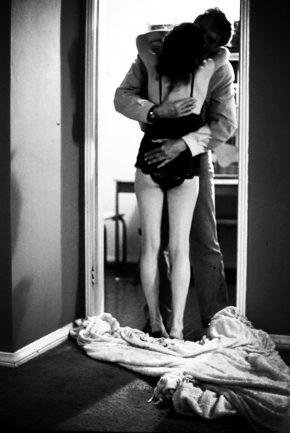
Though Challis’ lower half may inspire a bulk of his action, his reasoning goes deeper (smirk if you please). Challis may avoid his kids and lie to their mother, but it’s not just for the opportunity of laying Ellie. A man through and through, Challis and his curiosity are here to discover and understand as much as his desire is here to stand in the way.
Ellie’s father, Harry (in that opening chase scene, Harry is heard shouting: “They’re coming, they’re coming!” while only a few screens over in a movie house in 1982, Carol Anne announces, “They’re here”) is mysteriously murdered by a human-looking drone in the hospital in which Challis works.
Challis, out of a particular respect that comes to one who cares for their place of work and what happens in and to it, is hereby provided an escape route from his troublesome family life in exchange for the chance to aid someone else (this being Ellie) in their obvious time of need.
Off they go in search of answers, leaving behind them a trail of flames and a few kills at the mechanical hands of suave, businessman-looking robots (some social commentary here having those drones dressed like Wall Street? Hm?).
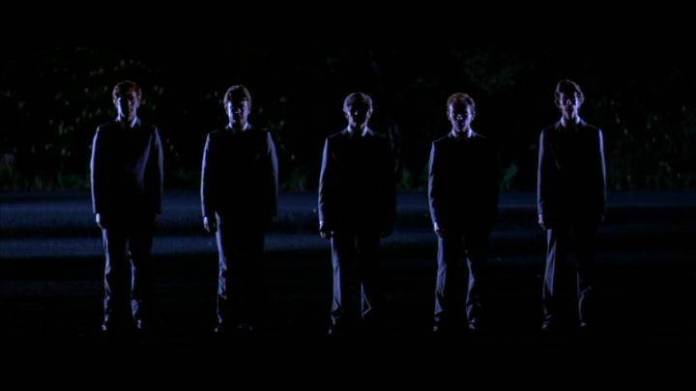
Of course, Challis doesn’t forget the High Life, either, which makes him more recognizable as a human (that is, calculating wants and needs above the ideal, forever and always) than merely a flat, one-dimensional character; gives him the polarities of good and not-so-good, but mostly good, that offer intrigue and the opportunity for audiences to have a reason to invest their reactive quips, scowls, questioning thoughts, or whatever they choose, into this film.
Challis and Ellie head to Santa Mira, the quaint, pastoral and fictional Californian town quite settled since all those unfortunate mishaps of those formidable Invasion of the Body Snatchers (1956) days. Of course, not really. This is a Halloween film, and so the audience’s wish for something frightening is indeed granted; Challis and Ellie, they are heading right for it, unquestionably curious.
Posing as “Mr. and Mrs. Smith,” the lovesome duo set up their makeshift base in a motel just outside the Silver Shamrock factory headed by one Conal Cochran (Dan O’Herlihy). Through Cochran, Carpenter and Wallace introduce the audience to their chief figure of evil.
Cochran is a slim, stately Irish man in his elder years who is also quite the dignified and renowned businessman. He is head of the immensely successful Silver Shamrock Company, known, this year, for its production of three “fun and frightening” Halloween masks: the witch, the skeleton and the pumpkin.
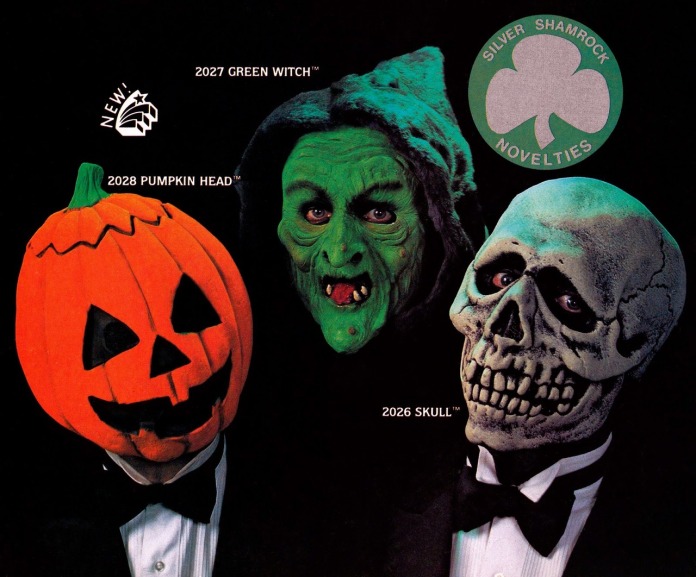
Cochran’s mien boasts the quiet condescension indicative of one of great success in the company of those ultimately out to thieve him, be it of goods, time, or even “trade secrets.” Cochran is a man who appreciates fine craftsmanship and a solid work ethic without the disobedience characteristic of unruly human beings.
With his inimitably warm tone of voice and improbable cool, Cochran chooses to meet the adversity of others with the attitude of an ingratiating father rather than a true competitor.
His words of warmth cover hostility like a heavy blanket as he pacifies a frightened Challis and Ellie upon discovering a woman (“Marge,” acted by Garn Stevens) with a horribly and unnaturally disfigured face being carted out of her motel room.
That’s right—a strange and alarming death at the same motel Challis and Ellie happen to be occupying. It does but increase the budding intrigue; and not incrementally, at that, as the audience, in but a few frames prior, witnessed a blue ray of death literally shoot from a micro-chip (attached to the trademark of one of those Silver Shamrock masks) straight to Marge’s mug, burning her face wide open to reveal a mess of a meltdown accompanied by a great many insects emerging from a mush of skin.
For fans of horror seen, as in special effects, this scene marks a highlight in Halloween III while simultaneously asserting its separation from the shadow-heavy and gore-less suspense of Carpenter’s initial chapter. Simply put: the makeup and special effects here are effectively gruesome. Looks like a plague burst from Marge’s face.
But anyways, back to Cochran, as he is indeed the focus of this tale as it unwinds. As Challis and Ellie observe this unparalleled and horrific discovery—Challis even tries to assert his doctor self to get a good look at Marge, but is coldly turned aside by a living stiff, one of Cochran’s drones—Cochran placates them both, announcing that Marge will be taken to . . . his factory (what? cries the viewer) for, the most “marvelous treatment.”
While the rational mind cries out against the thought of a woman so clearly in dire need of intensive medical treatment being carted off to a factory instead of being rushed to a hospital, Cochran’s tone, low, direct and but first warm and friendly, is indeed enough to hoodwink the simple souls trusting solely in what they hear from an authoritative voice delivered in a most unassuming manner. —It’s an old lesson to be learned again and again, isn’t it?
So this is Cochran: a man with pliable words behind a pleasing smile in the face of evil; a laudable business man, creatively responsible for such ultimately child-pleasing gags as sticky toilet paper and the soft chainsaw.

Yes, Cochran is the “all time genius of the practical joke”; a man who “has always paid attention to detail,” says Buddy Kupfer (Ralph Strait), a salesman who has sold more of Cochran’s Halloween masks than any other. Buddy, with his family in tow, is on his celebrated way to a private tour of the Silver Shamrock factory on behalf of Cochran as a personalized thank you for all his selling efforts.
Recognizing his motel partners, Challis and Ellie, Buddy convinces Cochran to let them along on the tour as well, thereby creating an avenue for exploration that Challis’ and Ellie’s combined curiosity simply cannot refuse. Cochran, sacrificing a wise discretion that would be eliminating any additional witnesses to his “special” operation, agrees to have them come along, though a heavy price be paid in the bargain for a first-hand look into the inner chambers of his modest empire.

Cochran’s factory and robotic henchmen may keep the town of Santa Mira guarded, ignorant and ultimately lifeless, but they cannot do so with regards to those most disloyal and perpetually disobedient creatures: yes, humans. Who else but a drunk, but a watchful drunk, at that, to strangle the mystery out of this picture with his truth-hungry hands? Throughout the ages, countless storytellers have found the mouths of the blind and drunk to house their dearest sentiments; and in this sense, Halloween III is no different. It’s . . . traditional.
Starker (Jonathan Terry), Santa Mira’s wayward truant drunk with liquor and lucid with truth, divulges much information in exchange for a nip off Challis’ bottle. Here enters some barbs on the big business tactics of Corporate America, as Starker relates: “He [Cochran] made Santa Mira what it is today—a dried up little pile of nothin’. Brought in every one of them damn factory workers from the outside. Think he’d hire me, a local boy? Turned me down flat!”
Previously in the film, when she and Challis first began investigating her father’s absence, Ellie quipped a similar line when, with a tone of gentle disappointment regarding her father’s struggle to keep up with big-business competitors, she remarked: “But business was bad. I suppose you shop at the new mall like everybody else, huh?” —Humorously enough, Ellie will be seen bringing to life a liquid staple of the mall environment, drinking a bottle of Coke at the motel, the label turned perfectly out towards the camera; Penzoil, too, will have its advertisement, the bright and shiny yellow gleaming while a man frantically enters a gas station on the run for his life. (Got to pay the bills. It’s no joke).

The information offered by Starker regarding Cochran and the dusty, rural town of Santa Mira is received by Challis in the dark, both literally and figuratively speaking. Come sundown, 6:00 pm, all inhabitants of Santa Mira are to be in their homes per the town curfew ordinance—brought to you by Silver Shamrock, of course, broadcasted over the town via Silver Shamrock sponsored wires. As the sun goes down, the sterilized voice of a woman (which is actually Jamie Lee Curtis, uncredited—Halloween fans, rejoice!), politely, and totally without feeling, admonishes the town: “Please confine your activities to your home. Have a very blessed evening.”
Movie cameras show the Silver Shamrock cameras on the wire where Leonard Cohen’s bird is nowhere to be found. Silver Shamrock’s commercials also fly in and out of eyes and ears, be it through the almighty television or the radio waves. Beyond Silver Shamrock produced noise, there’s hardly a peep in Santa Mira. All is quiet, all is obedient and all is damned, watched by the second and expertly scored by Carpenter and Howarth who are, compositionally, at their best. Look at ’em down there: Fire minds. Water hands.
So far, with its drone bots, abuse of power via tools of technology/thunderous media machinations, and kills complete with gruesome special effects, Halloween III has shown audiences some science fiction and horror motifs that would satisfy most any horror fan. Well, yeah, but then again, there’s that name, that dreaded, stupid name: Halloween. How could they call it Hall . . . .
But hey, what about the “witchcraft entering the computer age,” as one of the taglines suggests. Here’s a grand leap from the small, nowhere-nothing-Haddonfield-like story of a mysteriously evil boy; here we have a man, Cochran, who covers his face with nothing inhuman, yet contrives an unquestionably evil gag targeting children across the United States. “I do love a good joke, and this is the best joke ever: a joke on the children,” says Cochran with a tone bordering on gaiety (for him, at least). Then, to Challis, with a quick and grave tonal shift: “You don’t really know much about Halloween? You’ve thought no further than the strange custom of having your children wear masks and go out begging for candy.”
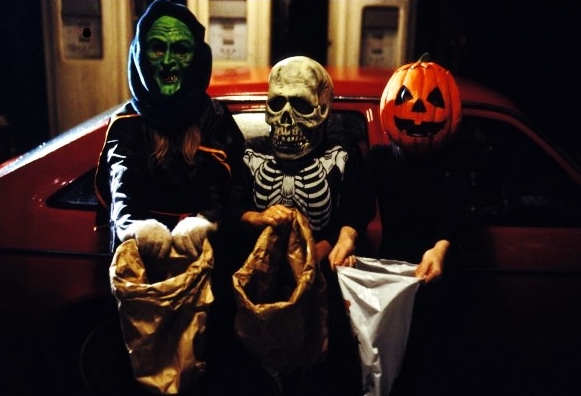
Cochran then heads off to the heart of his Silver Shamrock operation, the control room. The central control room is alive with artificial life bustling about, the drones occupied making preparations, checking, calculating. The room is full of machines, some broadcasting the infinitely annoying Silver Shamrock commercial (crafted to the tune of “London Bridges”); others displaying the futuristic, sci fi majesty that is a sea of screens with buttons, digitized numbers, wavelengths and graphics. Nonsensical flash for the casual viewer abounds!
Something else is in the room, too: “ancient technology”: a very special stone stolen by Cochran and his bots from Stonehenge, the Stonehenge, which provides the ancient and undying power that has somehow (is this the witchcraft element?) been harnessed in a computer chip which is embedded into each Silver Shamrock mask.
In this cold gray factory, viewers learn of Cochran’s wicked master plan: “the big giveaway,” in which children all across America wearing Silver Shamrock masks will tune in to their television sets at the same time (different time zones exist only in your world. not behind the screen of the imagination, so don’t even) and receive their final treat-disguised trick straight from Stonehenge’s awesome and deadly power. Yes, sit at home, watch TV, wait for a prize, get blown to death—the Americans are easy enough.

Cochran, not to be considered foolish, understands clearly how with just such a little push, droves of people, like leaves, can be moved with a touch as light as an autumnal breeze. To achieve his ends, Cochran goes where the people go: TV land. But he goes as a foreigner from a place where no television set sterilizes the living.
Cochran comes from a place where men, women and children watch from their “wattles of clay the hills red with the blood of animals and children” during the Festival of Samhain. With sight, with color, with sound, the American children are given their command through the window they’ve learned to trust (yes, the television); and they follow the order just as they are taught to do, buying up Cochran’s masks, anxiously awaiting the big night.
And so this piece comes to an end with a clip of not only what’s to come for the kids, but also what makes Halloween III worth the watch. All of the horror of what one man is capable of, the dark humor of the world and the cruel blooms of one society within it, the icy arrows of science fiction and cringe-worthy special effects, they’re all here. Take a look yourself at what makes Halloween III truly what it is, and happy freaking Halloween already!
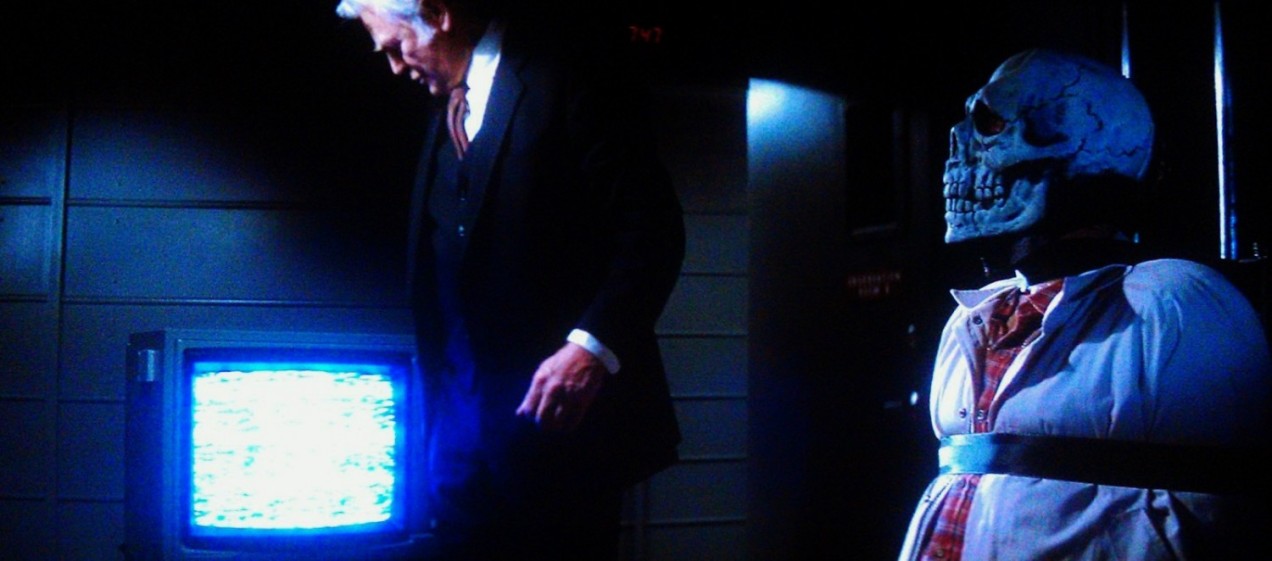
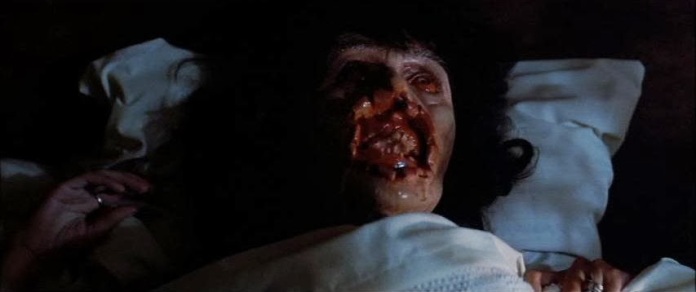
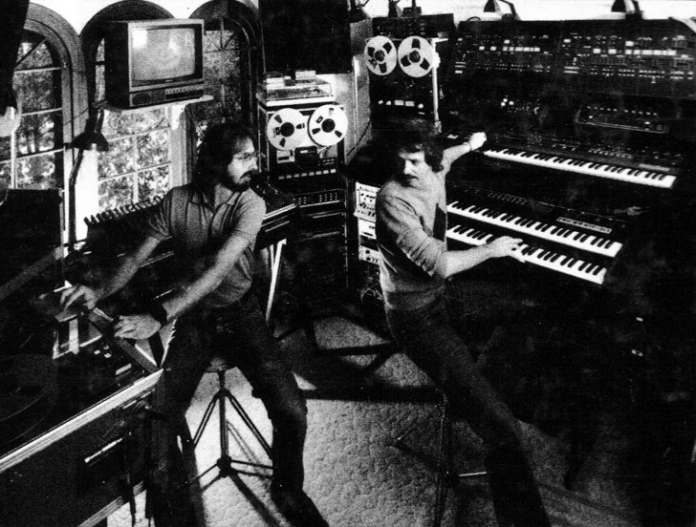
You must be logged in to post a comment.